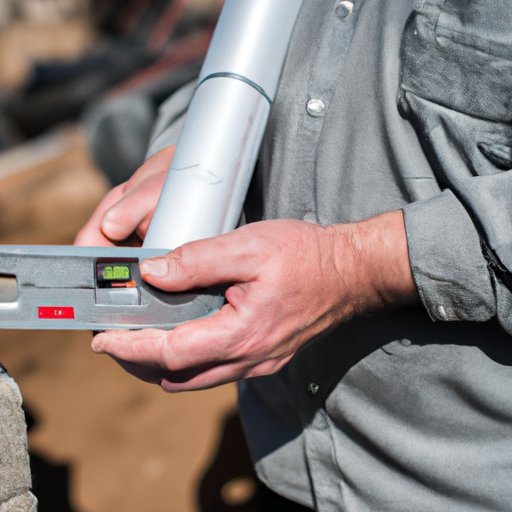
Introduction
Calculating yards of concrete is essential for any construction project that involves pouring a concrete foundation, patio, walkway, or other similar structure. However, it can be a confusing process if you are not familiar with how to do it. This guide will provide you with a step-by-step process for calculating yards of concrete. Additionally, we will help you avoid common mistakes, optimize your budget, and provide expert advice to estimate the right amount of concrete required for complex projects.
Quick and Easy Guide to Calculating Yards of Concrete
Before we dive into the details, let us define what a yard of concrete is. A yard of concrete refers to the amount of concrete required to cover an area of one yard in length, width, and height (27 cubic feet).
Here is a step-by-step process for calculating yards of concrete:
- Measure the area that you want to cover with concrete. For instance, if you want to lay a foundation for a 30′ x 30′ room, you will need to measure it as 900 square feet.
- Determine the depth of the concrete. Typically, the depth is 4 inches for a standard residential project. However, it can vary based on your project. You need to convert it into feet (0.33) to calculate yardage accurately.
- Multiply the square footage and depth to get cubic feet (900 x 0.33 = 297 cubic feet).
- Convert cubic feet to cubic yards by dividing by 27 (297 / 27 = 11 yards of concrete).
It is crucial to do accurate math and ensure you have the right yardage before ordering concrete.
Avoiding Common Mistakes When Calculating Yards of Concrete
Mistakes when calculating yardage can be expensive and can harm the project quality too. Here are some common mistakes people tend to make when calculating yardage:
- Forgetting to account for waste. Waste can come from several areas, including uneven ground, poor planning, or excess concrete being mixed. Not accounting for waste can lead to unexpected costs.
- Ordering too little material. Ordering too little material, to save costs, can be risky. Picking up extra material in the middle of a job is inconvenient and can be more expensive.
- Not considering the grade or slope of the project’s site. Concrete slopes or slopes that lean can make it difficult to estimate the required material.
To avoid these mistakes, you can take some precautions:
- Add 10-20% extra material for waste or unexpected needs.
- Double-check your calculations before placing an order.
- Take assistance from a contractor or professional for more complex projects.
Maximizing Your Budget: How to Calculate Yards of Concrete for Cost-Effective Results
Accurate estimating yardage is not only essential for successful projects but for saving money too. Here are some tips on how to calculate yards of concrete more cost-effectively:
- Order the right amount of concrete to minimize waste. It will prevent you from ordering too though material and save the cost.
- Consider alternative approaches like using a pump. It can help you save on labor and gas costs used in placing the concrete.
- Negotiate prices with suppliers or contractors. Communicating expectations and negotiating prices can save you significant money.
Expert Advice: How to Estimate Yards of Concrete for Complex Projects
Estimating yardage for complex projects like a driveway, parking lot, or sloped foundation requires more attention to detail. Here are some challenges one might face:
- Slopes, grades, and angles
- Unusual requirements like curbs, gutters, or steps.
Here are some tips from experienced contractors or professionals on how to estimate yardage for complex projects:
- Break the project down into smaller, more manageable areas: This can help you focus on trouble spots and estimate concrete requirements more accurately.
- Account for variations in grade or slope: Ensure you measure the project’s slope correctly and take it into account when calculating yardage.
- Use specialized equipment or tools to measure or level the site: This can improve accuracy and help you identify potential problems before they become more significant.
Optimizing Your Results: How to Calculate Yards of Concrete for Optimal Strength and Durability
Ordering the right amount of concrete is crucial to achieving optimal strength and durability. Here are some guidelines and advice on how to calculate yards of concrete for such projects:
- Consider climate and weather conditions when placing an order: Extreme conditions can weaken concrete. Know when it’s better to reschedule rather than have weaker results.
- Choose the right mix design for the project’s specific needs: Different types of concrete mix have different strengths and work better for specific projects.
- Consult with a professional or supplier for advice on the best options: It can be helpful to have expert advice on the available options for the project.
Conclusion
Calculating yards of concrete is crucial in any construction project. Accurate measurements help to achieve better results while saving costs. Whether it’s a small project or a complex one, this guide has provided essential tips to calculate the right yardage for your needs.




